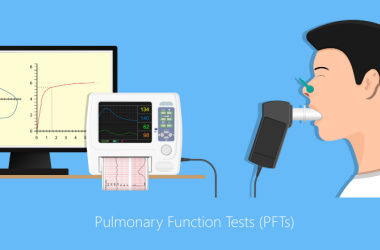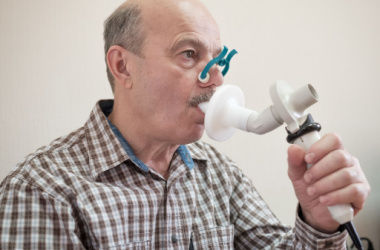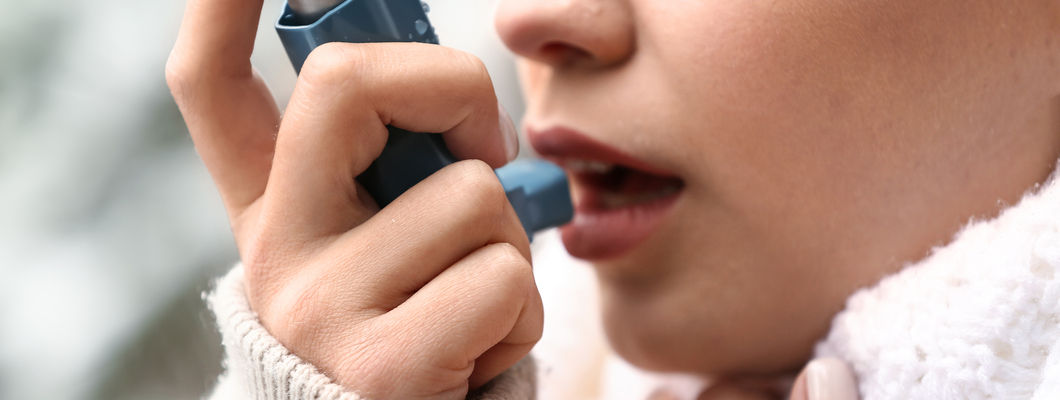Respiratory Health
Difficulty In Breathing? Get This Test Done
3 min read
By Apollo 24|7, Published on - 27 September 2022, Updated on - 16 June 2023
Share this article
0
0 like

Most of us often gasp for breath during and after a workout session. While this difficulty in breathing is a normal reaction of the body post intense exercise, falling short of breath frequently could be a sign of poor lung function. In such cases, one should get Pulmonary Function Tests (PFTs) done to evaluate the functioning of the lungs. PFTs can help identify any possible lung problem at an early stage.
Why Are Pulmonary Function Tests Done?
PFT can be recommended to:
- Find the cause of shortness of breath
- Diagnose lung conditions such as asthma, bronchitis, and emphysema
- Check lung damage due to exposure to certain substances
- To evaluate the effectiveness of pre-existing treatments for lung conditions
- Plan surgeries to treat some types of lung conditions
Which Tests Are Included In Pulmonary Function Tests?
Some of the most common types of pulmonary function tests are:
1. Spirometry. Spirometry is the most common type of pulmonary function test. In this test, the person is asked to breathe into a tube connected to a spirometer machine, which measures the volume of air inhaled and exhaled along with the rate at which the person exhales.
2. Lung volumes and capacities. These tests measure how much air your lungs can hold and how well your lungs can move air in and out.
3. Diffusing capacity of the lung for carbon monoxide (DLCO). This test measures how much oxygen is transferred from the alveoli of the lungs to the blood.
4. Nitrogen washout test. This test is used to measure lung capacity and residual volume (the amount of air remaining in a person's lungs after exhaling completely).
5. Blood gas analysis. This test measures the levels of oxygen and carbon dioxide in your blood.

What Happens During the Test?
During the test, the person is usually asked to sit or stand, however, those with pre-existing breathing problems are asked to lie down. The test usually starts with a spirometry test, where the person is asked to blow into a tube attached to a spirometer machine. The device measures the amount of air breathed in and out along with the speed at which it is done.
After the spirometry test, the person may be asked to do one or more of the following tests:
- Forced Vital Capacity (FVC): For this test, the person would be asked to take a deep breath and blow into the spirometer as hard as they can for 6 seconds.
- Maximum Voluntary Ventilation (MVV): For this test, the person would be asked to take two deep breaths and then blow into the spirometer for 12 seconds.
- DLCO: For this test, the person would be asked to breathe in small traces of carbon monoxide and methane gas and then blow it into the spirometer.
After the test, the person may be asked to wait a few minutes before leaving to ensure they're breathing normally.
Are There Any Side Effects Of Pulmonary Function Tests?
PFTs are generally safe and have very few risks. The most common side effect can be dizziness or lightheadedness after the test, especially if the person has asthma or another lung condition that makes breathing hard. If this happens during the test, the person may ask the doctor to stop the test until they feel better.

Pulmonary function tests can be necessary for diagnosing and managing lung conditions. If you have a lung condition, talk to your doctor about whether pulmonary function testing is right for you. Need more information?
Consult An Apollo Lung Specialist
Medically reviewed by Dr Sonia Bhatt.
Respiratory Health
Leave Comment
Recommended for you

Respiratory Health
Can Asthma Get Worse During Summers?
Summers can trigger allergies, which can further trigger asthma. Here is what you need to know to keep asthma attacks at bay this summer season.

Respiratory Health
Does Hot Weather Affect Your Breathing And Lungs?
breathing problem in hot weather, difficulty breathing in hot weather, shortness of breath in hot weather, shortness of breath hot weather

Respiratory Health
How to Tackle That Niggling Chronic Cough
Coughing is considered normal during seasonal transitions, as it could be due to an allergy. However, if the cough persists for long, it may indicate an underlying medical condition, that requires attention.
Subscribe
Sign up for our free Health Library Daily Newsletter
Get doctor-approved health tips, news, and more.
Visual Stories

Can Asthma Symptoms Get Worse Indoors?
Tap to continue exploring
Recommended for you

Respiratory Health
Can Asthma Get Worse During Summers?
Summers can trigger allergies, which can further trigger asthma. Here is what you need to know to keep asthma attacks at bay this summer season.

Respiratory Health
Does Hot Weather Affect Your Breathing And Lungs?
breathing problem in hot weather, difficulty breathing in hot weather, shortness of breath in hot weather, shortness of breath hot weather

Respiratory Health
How to Tackle That Niggling Chronic Cough
Coughing is considered normal during seasonal transitions, as it could be due to an allergy. However, if the cough persists for long, it may indicate an underlying medical condition, that requires attention.